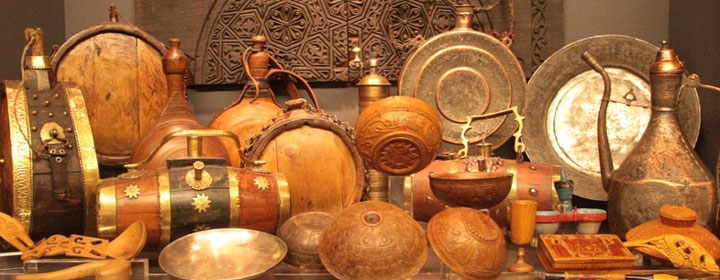
The Folklore Museum and Archive of the Faculty of Philosophy of the Aristotle University of Thessaloniki was established during the first years of the operation of the University of Thessaloniki, at the end of the 1920s, upon the proposal of the great folklorist Stilpon Kyriakidis, who was then holder of the Chair in “Religion of Ancient Greeks, their Private Life and Folklore.”
Although folklore studies in Greece focused on ancient times, as it is clearly indicated by the title of the Chair, it was decided that the establishment of the Museum and Archive should focus on research and teaching directly related to contemporary traditional culture. Kyriakidis aimed to create a core unit which would evolve later into a complete folklore museum, helping students and future researchers familiarize themselves with and study the traditional culture of North Greece. Assisted by a committee which consisted of intellectuals from Thessaloniki, as well as by students, Kyriakidis managed to collect art objects, objects of everyday use, utensils, farming tools, etc. Hence, the museum would provide students and researchers with the opportunity to examine the objects made and used by people in their everyday life. Furthermore, Kyriakidis’ objective was to display sets of similar objects, through which one could trace the development of traditional art forms and techniques. If this was achieved, the museum would meet the needs of relevant courses offered at the university.
A continuous exhibition at the old building of the Faculty of Philosophy
Efforts to establish the Folklore Museum and Archive were unfortunately interrupted when the Second World War broke out. The items of the museum and the archive material were protected during the occupation period, and when this ended they were transferred back to room 14 of the old building of the Faculty of Philosophy, where the Library of Folklore was located. Many generations of students of the Faculty of Philosophy recall the continuous exhibition held and the great items displayed in nice, pre-war, wooden showcases. Folklore professors and heads of the Museum who succeeded Kyriakidis in the aforementioned chair, D. Petropoulos and Alki Kyriakidou-Nestoros, along with the personnel of the Museum and the Library of Folklore, protected the Museum and the Archive with zeal, trying at the same time to enrich its collections, although they had only small amounts of money to spend on this project.
Thanks to Alki Kyriakidou-Nestoros, most items of the Museum have been photographed and classified. Moreover, she implemented a very important programme with the aim to hold a new exhibition and organize again the Museum, wishing to display items thematically (for instance, “traditional farming” items), by presenting typical “samples” of every category, as well as other information material (photographs, books, outlines, tables, etc.), giving, thus, a historical dimension to each theme.
Due to the 1978 earthquake, the Museum had to relocate again and have its items kept in a safe place. A new exhibition is to be held in the renovated old building of the Faculty of Philosophy and, more specifically, at the basement (rooms 8-9), where the items of the Museum will be displayed. The opening of the exhibition has been delayed, however, due to current shortage of sufficient funding and the small number of scientific personnel employed at the Department of Folklore. Assisted by postgraduate students, though, the research personnel carries out various tasks regularly, such as maintenance, classification and organization of the material, using modern means (e.g. material registration, processing, and classification using a computer, etc.).
A wealth of material
In general, the material displayed in the Folklore Museum and Archive of the Faculty of Philosophy of the Aristotle University of Thessaloniki is divided in two large categories of collections:
- Museum items: folk costumes, embroidery, hand-woven material, silver pieces, metal works, wood curving, pottery, musical instruments, paintings and old photographs.
- Archive material: unpublished papers, proverbs and songs, recorded music from various places of Greece and N. G. Politis’ archive of excerpts.
The Archive also contains a film-documentary on people participating in the fire-walking ritual of the Agia Eleni village, in Serres. It was made in 1973 by Th. Xatzipantazis and supervised by professor G. M. Sifakis, who was appointed to the Chair in Folklore. The film-documentary was financed by the University of Thessaloniki.
Recently, the Archive has been enriched with the personal archive material and the collection of books of Stilpon Kyriakidis, donated by Alki Kyriakidou-Nestoros just before she died.
Finally, it needs to be noted that a temporary exhibition of some of the Museum items (mainly jewellery) was organized, with the support of the Rector’s Council, which was held in the room of recurrent events of the Museum of Byzantine Culture of Thessaloniki in 2006.

